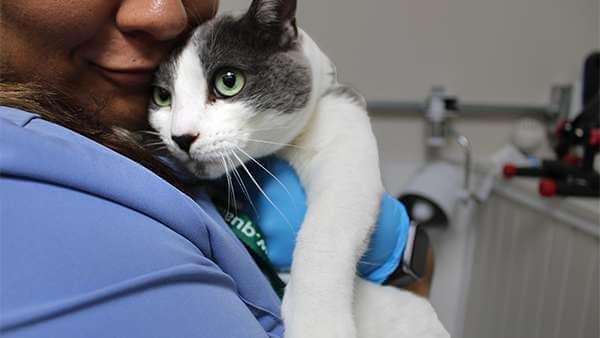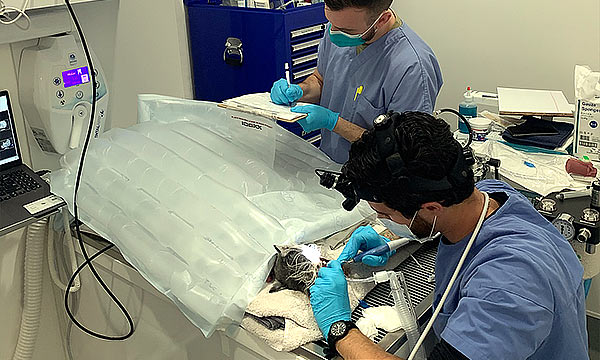Advanced Care™ Oral Surgery for Dogs (and Cats)
As great as our Signature Service preventive dental cleaning is, there are times when a wakeful procedure is not an appropriate choice. If that turns out to be the case for your dog or cat, we'll discuss the specific issues and why they prevent Signature Service from being an option, as well how we can address those problems with Advanced Care™ oral surgery.
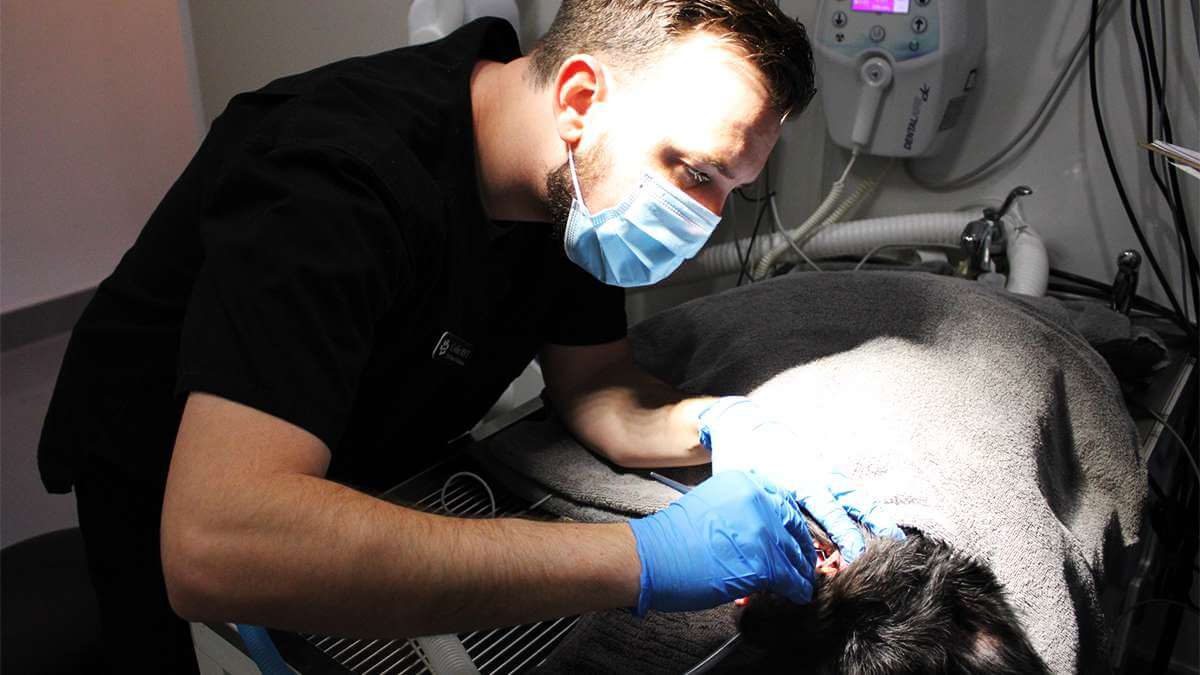
Reasons your pet may need Advanced Care
Our screening process determines your pet's candidacy for a Signature Service cleaning. This process takes into account the animal's overall and specific health issues. their behavioral profile and a preliminary assessment of their dental condition. Some common reasons include
- if extractions are necessary
- in the presence of a severe periodontal infection
- if dental radiographs (x-rays) are required
- if behavioral issues present a safety hazard
A dog (or cat) with conditions like these simply cannot be safely or effectively treated with the non-anesthetic method. This is where Advanced Care becomes necessary.
Advantages of Advanced Care
While never out first choice, Advanced Care provides some advantages in treating more complicated dental problems.
- Easier access for both cleaning and periodontal examination
- Radiographs (x-rays) are possible, necessary for suspected root infections
- Required blood work may discover previously undiagnosed health issues
- Reduced risk of aspiration or movement-related injury
Advanced Care Oral Surgery - How it works
Before Surgery
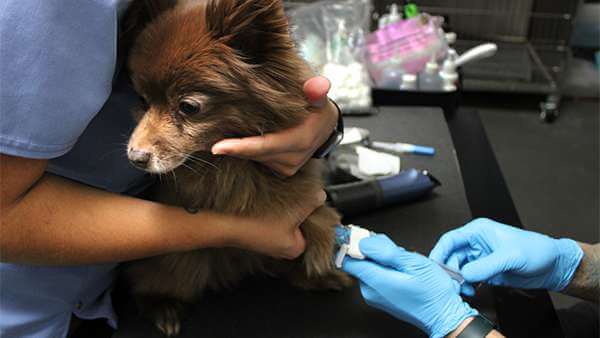
Preanesthetic Exam
After admission, your pet will get a thorough examination, confirming any conditions found during screening and checking for others not discovered.
Part of this exam includes a CardioPet ECG. Just like human electrocardiograms, it records your pet's heartbeat. That record is instantly transmitted to a veterinary cardiologist for review, and can help identify hard-to-detect heart conditions, such as potentially dangerous arrhythmia, which could prevent a safe procedure.
Blood tests
If not already completed before your surgical appointment, a blood draw is performed. Complete blood cell count, serum biochemistry, and urinalysis tests are run in our in-house laboratory. These tests help can help identify any hidden risk factors with regards to the anesthesia.
Fluid Therapy
Fluid therapy is also administered via I.V. catheter, to ensure that your pet is fully-hydrated before surgery.
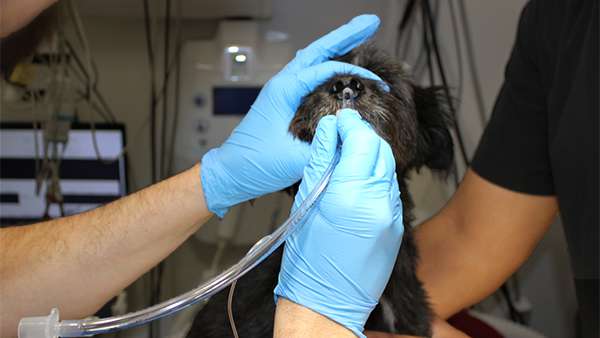
During Surgery
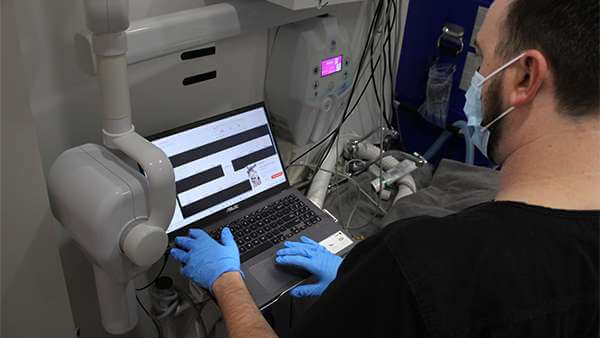
Safety First
Your pet is attended by both the veterinarian and a veterinary technician during surgery. With the help of modern medical technology, we are able to monitor your pet's vital signs throughout the entire process. Factors monitored include:
- Oxygen Saturation
- Heart Rate
- ECG Waveform
- Blood Pressure
- Respiratory Rate
- Core Body Temperature
In addition to monitoring vitals, we feel that maintaining an ideal core body temperature throughout the procedure is a significant safety factor. We address this issue in two ways:
- An inflatable polymer blanket connected to a high-accuracy heat pump. The pump pushes warm air through the blanket, maintaining a specified temperature and transferring that warmth to your pet from above.
- A radiant heat system integrated with the operating table. This system's heat therapy pump pushes warm water through tubes within the table to give your pet gentle, non-drying warmth from below.
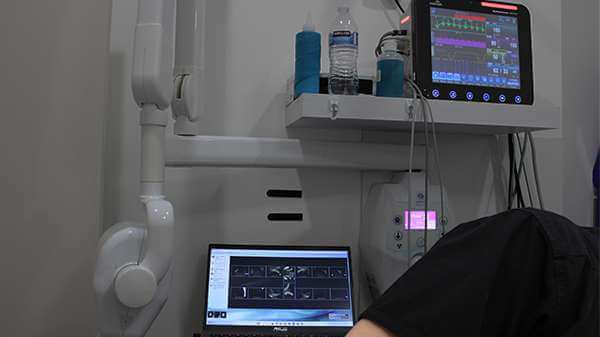
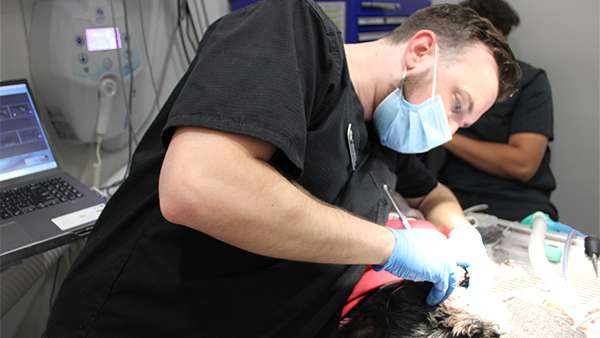
Dental Procedure
The first part of your pet's dental surgery closely resembles our Signature Service™ Preventive Dental Cleaning, because the same tools and techniques are used. The main difference is that the patient is asleep.
- Scale & Polish - during the surgery your pet will have their teeth scaled and polished, including under the gumline.
- X-rays - digital radiographs of your pet's mouth and get a full assessment that will be charted for you to take home.
Extractions
No one wants to lose teeth, but sometimes a tooth is more trouble to keep than it is to remove. When good teeth go bad, extraction is almost always the best solution. But problem teeth are not always obvious at the initial exam. In some cases problem teeth are discovered during the cleaning or discovered on review of the x-rays.
If this is the case for your pet, the veterinarian will discuss this need with you as well as the additional fees that go along with it.
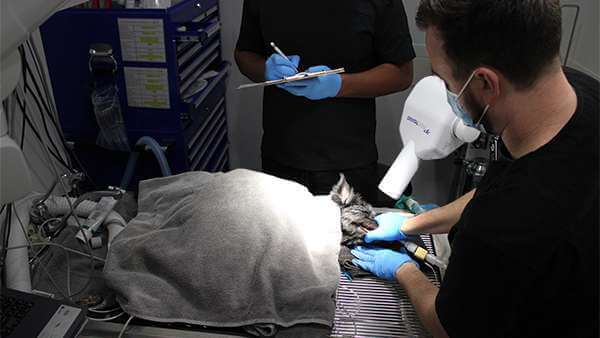
After Surgery
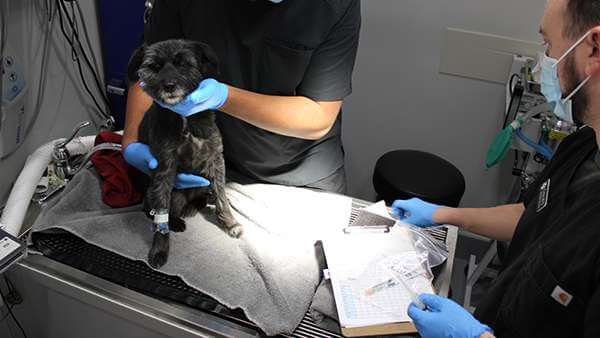
Recovery
Your pet will recover in a warm area with one of our veterinary technicians. We will continue to monitor their vital signs after the procedure and continue pain management if needed.
What you can expect when returning home is your pet wanting to rest. You can offer them half the normal amount of food you normally feed them that night and preferably wet or dry food mixed with water to soften it. It is very normal for pets after anesthesia to not want to eat that night. Please return to normal food amount with soft food the next day.
We will be sending you home with medications depending on the severity of the dental disease. Usually an antibiotic, anti inflammatory and pain medication will be prescribed. Please follow the directions for these medications as they will help aid the healing process for your pet.
We would like you to continue at home dental care by using dental rinse, dental chews, and brushing. We will send you home with a sheet showing when to use these items as well as a toothbrush, toothpaste, oral rinse and a one dental chew. If your pet likes the dental chews we do have bags available here for you to purchase.
